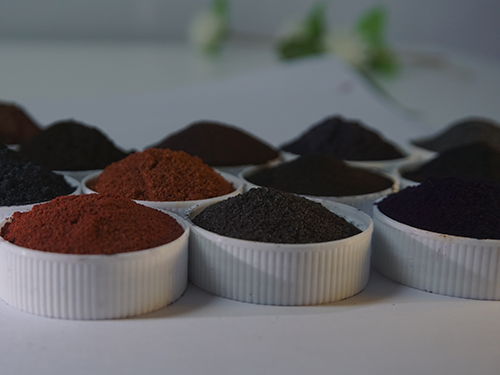
In order to adapt to the fierce competition in the textile market, Dongguan Tiansheng Chemical continuously improves the various properties of dyes, making their RFT higher and more environmentally friendly!
1、 What is RFT?
RFT is the one-time success rate of reactive dye dyeing, which is the one-time OK rate that our dyeing factory has been pursuing at this stage, because it plays a significant role in improving the operation of printing and dyeing enterprises, especially when the raw cotton source is different and the quality is inconsistent, there are many uncertain factors during cotton fabric dyeing, which reduces the dyeing success rate. Therefore, seizing RFT and continuously improving the one-time success rate of dyeing will have a great effect. Numerous production practices have proven that:
1. For every 1% increase in RFT, the total production cost can be reduced by 1%;
2. For every I% increase in RFT, the profit per kilogram of fabric produced can be increased by about 10%.
To achieve a high RFT, the entire dyeing and processing engineering must establish operational standards, establish dyeing and engineering monitoring methods, and establish online management and recording of all parameters of the dyeing and processing engineering; Establish a verification method for raw fabric, water, and dyeing aids (salt, alkali, acid, etc.); Establish quality control methods and correction methods for dyed products. Of course, developing new reactive dyes with high RFT as the goal is an important condition to ensure high RFT.
2、 How to respond to new market requirements?
The biggest problem with clothes made of medium to high grade cotton fiber fabric today is that the dyeing fastness cannot meet new requirements, especially for cotton fabrics with fashionable styles. In fact, to solve this problem, it is recommended to use vat dyes. However, the color of vat dyes is not bright enough and their use is not convenient. Therefore, the textile market expects the dye industry to develop new reactive dyes that meet the new requirements for the firmness of cotton dyed fabrics.
1. New fastness requirements
Most of the problems encountered with cotton fabrics dyed with reactive dyes are fading or partial fading. In most cases, there are four situations: fading caused by sunlight, fading caused by chemicals, fading caused by repeated washing, and poor wet rubbing fastness.
(1) Sunlight fastness
The most common evaluation method for sunlight fastness is to use a carbon arc lamp fading tester or a xenon lamp insolator that emits xenon light. Due to the fact that the ultraviolet light in carbon arc lamps is stronger than real sunlight, it is better to choose a xenon lamp insolator to study the actual fading phenomenon. For reactive dyes, the light fastness of metal containing reactive dyes is generally good, while azo type reactive dyes, especially red and navy blue dyes, have poor light fastness.
2. Light sweat composite fastness
The decomposition reaction of reactive dyes in the presence of aqueous media is accelerated due to the enhanced absorption of ultraviolet rays by the water layer; In addition, reducing substances such as reductases in sweat can promote this decomposition reaction, so the sweat fastness of reactive dyes to sunlight is not as good as that of reducing dyes. At the same time, most metal containing reactive dyes undergo demetallization under the action of sweat and sunlight, resulting in significant color changes.
3. Fading caused by repeated washing
In recent years, from the perspective of environmental protection, strong detergents have been developed to reduce the amount of water used for household washing and reduce water temperature. In the past, in countries such as Europe and America, detergents with added peroxides were generally used. In order to further improve the cleaning effect, new powerful detergents added tetraacetylethylenediamine (TAED). This new detergent will cause most cotton fabrics dyed with reactive dyes to fade, and there are two situations:
(1) The alkali contained in the detergent breaks the covalent bond between the reactive dye and the fiber or breaks the binding between the reactive group of the dye and the parent dye to cause fading, which is the case for most fabrics dyed with vinyl sulfone reactive dyes after repeated washing.
(2) The peroxide and tetraacetylethylenediamine contained in detergents destroy the parent dye and cause fading. However, for reactive dyes that use azo groups as the dye backbone, if there are substituents on the benzene ring adjacent to the azo group, these substituents play a protective role and will not fade. For example, ProcionH-EXL dyes are stable; If there is only one protected substituent, such as RemazolBlack B, or the substituent without protection in the molecular structure of the dye, such as CibacronRed C-2G, it will fade after repeated washing. Generally speaking, the degree of fading caused by the destruction of the parent dye in the second case is more severe than in the first case.
4. Reactive dyes with high wet rubbing fastness
The wet rubbing fastness of deep colored cotton fabrics dyed with reactive dyes cannot meet the market requirement of Level 3, and has become one of the main "technical barriers" set up in the international market. After extensive research, it has been found that cotton dyed fabrics undergo color transfer during wet friction due to two reasons: one is the transfer of water-soluble dyes from the dyed fabric to the white cloth being rubbed, and the other is the transfer of colored fiber particles. In recent years, new reactive dyes developed to improve wet friction fastness have been carried out from these aspects. For example, the SumifixHF series of dyes contain double reactive groups, which have excellent enhancing properties Strong valence bond stability, high fixation rate and easy washing, as well as excellent reproducibility, low drainage load, and high production efficiency, its wet friction fastness can reach around level 3.
5. Novel Reactive Fluorescent Dyes
The brightness of dyed fabrics has always been a goal pursued by people, and the use of high brightness reactive dyes for cotton dyed fabrics is one of the long-term research focuses. The yellow fluorescent reactive dye from Guangdong Tiansheng New Materials can be used for fiber rope fibers, which are extremely bright and have good fastness. It is suitable for various processes such as exhaustion dyeing, cold pad-batch dyeing, and continuous dyeing. This dye is suitable for high visibility workwear standards, as well as for the dyeing of fashionable clothing and sportswear. It can also be used for the dyeing of blended fabrics composed of cellulose fibers and polyester fibers or polyamide fibers.
The reorganization of dye manufacturing enterprises in the world today has become more stable, and there are few major restructuring events. At the same time, the pace of fiber and textile production in Europe and America moving eastward to Asia is accelerating, and the proportion of textile imports in Europe and America has also increased to over 80%, Therefore, on the basis of meeting environmental and ecological protection requirements, various dye companies around the world have placed the development of new fastness properties that meet market demand and new reactive dyes that are conducive to textile competition in an important position. Guangdong Tiansheng New Materials also takes the task of environmental protection as its own responsibility and implements it in all aspects. Therefore, we continuously research and explore to improve the various properties of dyes. Therefore, our dyes not only have excellent sunlight fastness in various situations, but also have good fastness to sweat sunlight, chlorine water, repeated home washing, and wet friction, but also have excellent lifting, leveling, and reproducibility, suitable for high RFT dyeing.
About
Brief introduction Application Certificate Laboratory Connectproduct
Post finishing agent Enzymatic water Brightener Printing/Coating Additives MoreNews
Dynamic Lnformation Common
Mobile website

TRL:+86 0769-88124837
Chinese mailbox:dgtshdrl@163.com
English mailbox:postmaster@tianshengchem.com
Guangdong Tiansheng Environmental Protection New Material Technology Co., Ltd. Copyright © 2023 all rights reserved